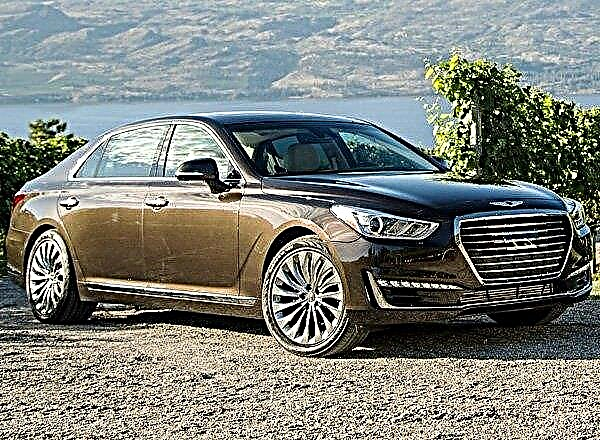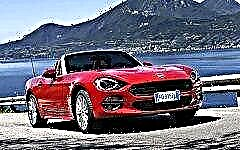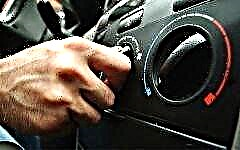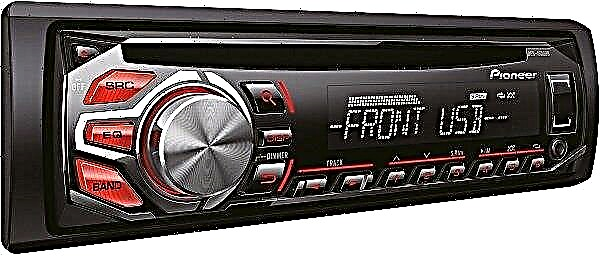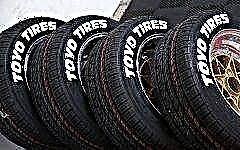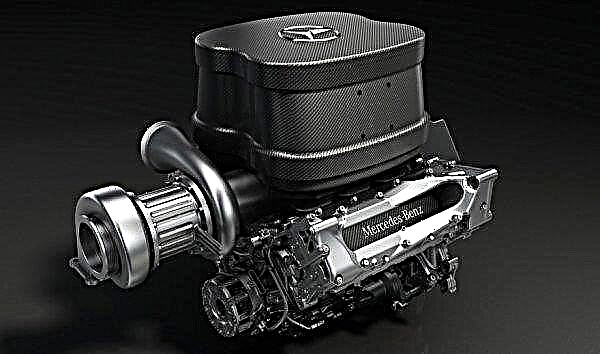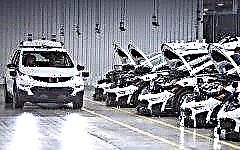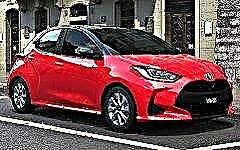

The content of the article:
- A bit of history
- Top Mexican Cars
- Features of Mexican cars
Most people associate Mexico with anything other than the automotive industry. Prairies, cacti, spicy Mexican cuisine, emigrants ... Cars - this is to the powerful northern neighbor, the USA.
But in the meantime, in Mexico there is, albeit a modest, but production of motorcycles and trucks and, surprisingly, supercars.
A bit of history

In the photo: a tank on a modern DINA HTQ chassis
Automotive production in Mexico existed, but for a number of reasons it turned out that almost all Mexican automobile companies either worked for a relatively short time, or, while continuing to function, are mainly engaged in tuning or manufacturing full-fledged cars in a single copy, to order.
Let's list the most famous manufacturers:
- Solana, one of the oldest automobile companies in Mexico, has been making cars since 1936, mainly in the sport of bespoke models;
- DINA - has been producing buses and trucks since 1951;
- Veh? culos Automotores Mexicanos (VAM) - from 1946 to 1989 assembled US models and produced their own cars based on American ones;
- the Ramirez company - since 1946 has been producing trucks and cars for rural areas, now it no longer exists;
- Mexicana de Autobuses (MASA) - from 1959 to 1998, produced trolleybuses and buses;
- Italika is perhaps one of the few Mexican companies that has been successfully producing motorcycles from 2005 to this day.
The above list clearly demonstrates that with the production of their own cars in Mexico, to put it mildly, things are not going well.
After some of the companies ceased to exist at the end of the last century, the Mexican automotive industry was limited to the assembly workshops of Ford and General Motors, which, not so long ago, having appreciated the cheapness of labor, were joined by Toyota, BMW and Nissan.
But in the XXI century it became clear that the dream of speed and their own cars is very common for Mexicans. Now this country can show the world a number of quite interesting supercars, hypercars and track cars.
Top Mexican Cars
Mastretta MXT

In 2007, the entrepreneur Mastretta opened a company, which, according to his ideas, was to create and launch into mass production a supercar that could compete with the famous Lotus Elise.
Already in 2008, a car created on the basis of Mastretta's sketches was presented to the public at a motor show in the capital of the country, but it never came to a serial conveyor: a small car (its length was only 390 cm) did not correspond to what was intended, being absolutely not ready for modern automobile realities.
After this trouble, Mastretta did not give up, but, taking into account the mistakes, continued to work, and in 2011 the first Mastretta MXT cars were still released on the Mexican market.
The car is based on a 4-cylinder 2-liter all-aluminum engine manufactured by Ford (Duratec line), equipped with a turbocharger and an internal cooler. The power of the power unit is 253 hp.
Paired to the engine, the car has a five-speed manual transmission. This tandem allows this rear-wheel drive car to accelerate to 100 km / h in less than 5 seconds. The maximum speed of the model - 241 km / h - is more than a decent indicator.
When developing the car, the latest achievements of the automotive industry were taken into account: the car is made of aluminum, carbon fiber and fiberglass, which makes it both lightweight and durable, and modern engineering solutions allow you to achieve a high degree of handling on the road.
Remarkable is the fact that Mastretta's car turned out to be not only high-speed and powerful, but also complying with European environmental standards (according to passport data, the model meets the requirements of the Euro-5 standard). The gasoline engine requires 7 liters of fuel for every 100 km of the combined driving cycle.
It's no secret that new car companies must work hard to stay afloat in an economic ocean dominated by the already experienced, powerful and merciless "sharks" of the automotive industry.
The brainchild of Mastretta did not escape the intrigues of competitors. Following its performance at the London Motor Show, Top Gear TV presenters criticized the new Mexican car extremely negatively, calling it "a huge tortilla with wheels."
But here the British sharks from the media miscalculated: Mastretta did not swallow the insult, but preferred to sue the BBC, and demanded that Top Gear not pay monetary compensation, but test the car.
This move turned out to be more than successful: after the Mastretta MXT was tested by the TV presenter of the program, Richard Hammond, she received an objective positive review. From that moment on, the company began to acquire buyers not only from its native Mexico, but also from various countries of the world.
VUhL-05

Having witnessed the success of one enthusiast of the domestic automotive industry, other Mexicans also wanted to go through it. In 2014, brothers Guillermo and Iker Echeveria introduced the world to their four-wheeled brainchild. True, for the debut of their track car, Echeveria immediately chose not a domestic, but a foreign auto podium - the Speed Festival in English Goodwood.
From the point of view of patriotism, this may not look very attractive, but for the model itself, such a choice turned out to be a successful decision: sales of the new item began in the same 2014, and simultaneously in Europe and North America, and after a year and a half gained momentum also in the countries of the Middle East and China.
The VUhL-05, like the Mastretta MXT, is based on a Ford engine, but in this case, the powertrain model is already more modern - this is a two-liter Ecoboost with a capacity of 290 hp. The model accelerates to hundreds of kilometers per hour from standstill in 3.7 seconds, and the declared maximum speed of the car is 245 km / h.
State of the art materials used to create the body, suspension and engine subframe provide the vehicle with high strength and low weight.
So, the mass of an aluminum alloy monocoque is only 78 kg. Manufacturers offer the manufacture of body panels of the model at the request of the customer - from carbon fiber material or from fiberglass. In the first version, the weight of the car will be 700 kg, in the second - 730 kg.
It is fair to say that VUhL-05 is not 100% Mexican in terms of production: for example, composite exterior body panels are manufactured on a production line in Canada.
After parts reach Mexico, the car is assembled in a Mexican factory that the Echeveria brothers convinced the Mexican government to finance.
The finished car is sent to the British car tracks, where the car receives the final calibration and fine-tuning. Not surprisingly, with such a production technology, only about twenty VUhL-05s are created per year.
The car is designed for both racing tracks and normal highways. Manufacturers hoped primarily to sell their model in the Middle East market, positioning the car as a "purchase for millionaires": the cost of the sports car is 95 thousand dollars.
Currently, in addition to wealthy lovers of fashionable cars in the Middle East, residents of the UK and the United States can purchase this model.

In the photo: VUhL-05RR
At the beginning of 2019, the Echeveria brothers presented the next step in the evolution of the VUhL-05 - the VUhL-05RR model.
Due to the fact that almost the entire car is created on the basis of carbon fiber, the novelty has become lighter by almost 70 kg, and the power of the 2.3-liter turbo engine has increased by 115 hp, which leaves behind such "monsters" as Ferrari and McLaren. The car accelerates to 100 km / h in 2.8 seconds, its maximum speed is 275 km / h.
At the presentation of the novelty, the manufacturers indicated that they plan to sell the VUhL-05RR, like its predecessor, in the domestic, European and North American markets.
Sports enthusiasts will be offered many additions to the base model, including adjustable suspension and slicks.
Devilish LTM Hot Shot

Just a year after the VUhL-05 debuted, Mexico has its own hypercar.
The model was presented in 2015 by LTM Hot Shot at the capital's motor show Expo Automotriz Santa Fe under the pretentious name Inferno Exotic Car.
The exterior of the model did not leave the audience indifferent: pretentious and at the same time predatory rapid contours, aggressive "infernal" colors, no doubt, look very impressive. But the main "feature" of the car was a new patented material from which the body of the model was created.
Inferno is made from the so-called "metal foam" - an aluminum alloy with the addition of silver and zinc. The alloy has a high "steel" level of rigidity, which is combined with a low, almost "aluminum" density (3.6 grams per cubic centimeter, compare with the same indicators of steel - 7.8 and aluminum - 2.7).
Metallic foam has an excellent ability to "take impact", deforming without loss of properties and violation of integrity. With such a characteristic and with a low specific gravity, it becomes just an ideal material for creating lightweight and reliable cars.
The car has a declared engine power of 1400 hp, the eight-cylinder engine is able to accelerate the hypercar to hundreds of km / h in less than 3 seconds, the top speed of the model is 395 km / h.
Before the car was presented to the general public, the development of the Inferno was carried out for seven whole years. The process involved both Mexican engineers and Italian specialists, the designers who took part in the creation of Lamborghini supercars - in particular, the famous automobile designer Antonio Ferrarioni.
However, the presentation of the first Mexican hypercar was not without a certain intrigue. The creators did not specify whether they showed a running prototype at the Mexico City Motor Show or just a model of the car. They only stated that the first limited batch of cars will be produced on the Italian automobile conveyor.
The first production of Inferno Exotic Car was planned for 2017, the batch was supposed to be limited to only 11 copies.
A characteristic point illustrating the interest of motorists in this model was the fact that after this announcement from the manufacturers, orders were immediately received for 8 out of 11 cars that had not yet been produced.
The owners of the car company received the lion's share of orders from the countries of the Arabian Peninsula, and this is not surprising: in addition to the eccentric, if not aggressive exterior, the model boasts a luxurious interior design that is quite capable of competing with the Chiron models.
Features of Mexican cars
The development of the Mexican car industry is a vivid example of the fact that even a country that does not have deep traditions of creating topical car models may well surprise with its developments.
Mexicans have successfully demonstrated to the world that they are able to both create a successful supercar and put its production on stream, and cope with the development of new revolutionary materials for a new generation of cars.
However, one should not forget that all these developments were made not without the help of foreign experts, but in the modern world with its globalization it is difficult to expect something else.
It remains to wish the Mexican specialists further success in the development of the domestic auto industry. Mexico is a country of large open spaces, and good cars of its own production will not interfere with it!

